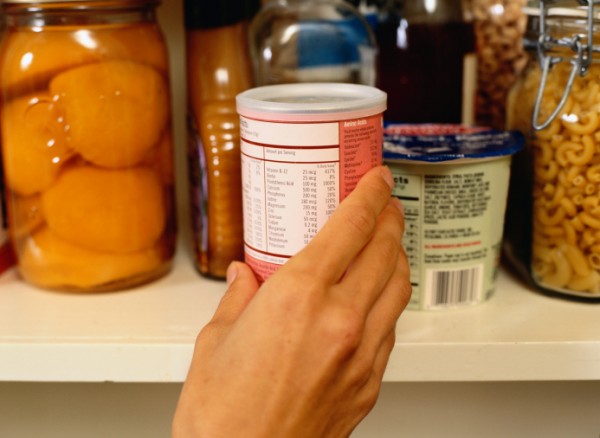Can Reading Food Labels Help You Get Healthy?

You’ve probably heard a lot about “health foods,” but have you ever wondered if they really are healthy? Many of these foods may seem healthy at first glance. But, if you don’t read the label, you don’t really know what you’re getting, or whether the food is healthy or not. By learning to read a food label, you can take control of the food you eat and your overall health.
What is a food label?
A food label is found on the package of many foods and drinks to tell you how many calories, fat, and other nutrients are in each serving.
How do I read a food label?
Sometimes what you see on a food label may be the amount of nutrients in one serving, not the whole package. A bottle of juice may say that it contains 100 calories per serving, but the whole bottle actually contains3 servings. If you drink the whole bottle, you will have consumed 300 calories—3 servings at 100 calories each is a total of 300 calories.
What nutrients are on a food label?
The main nutrients found on a food label are:
- Calories: A calorie is a unit of energy. One gram of protein is equal to 4 calories, one gram of carb is equal to 4 calories, and one gram of fat is equal to 9 calories. Your body needs calories to function. However, if you eat more calories each day than your body needs for energy, the extra calories will get stored as fat, and you will gain weight. You should ask your healthcare provider how many calories you should eat every day to lose weight or maintain your weight.
- Protein:Protein is found in meat, fish, eggs, dairy, beans, tofu, and some vegetables. Protein is the building block of muscle. Most people should eat between 46 and 56 grams of protein every day.
- Carbohydrate: A carbohydrate, or carb, is the main source of fuel in the body.Carbs include fiber and sugar.
- Fiber:Fiber is a type of carb that is not digested in the body, but is very healthy to eat. Fiber helps to slow down digestion so your body can absorb more nutrients from the food you eat. Fiber is found in fruits, vegetables, and whole grains.A fiber-rich food will contain at least 2 grams of fiber per serving.Adults should eat between 25 and 38 grams of fiber a day.
- Sugar:Sugar is a type of carb, and the most common source of fuel in the body. Not all sugars are the same. Fresh fruits contain sugar (called “fructose”), but they also contain lots of other good things like fiber, vitamins, and minerals. Sometimes sugar is added to food to make it sweet, like in breakfast cereal or soda. These are called “added sugars.” Eating foods with added sugars can be unhealthy because you often get a lot more calories than you realize, and this can cause weight gain.
- Fat: Fat is another key fuel source in your body. Fat also helps keep your skin healthy, protects your organs, and helps transport vitamins throughout the body. Most people should eat between 20 and 35 grams of fat a day. There are two types of fat:
- Saturated fat is known as the “bad” fat. It can build up in the blood vessels and make it hard for blood to flow to the heart. You should limit the amount of this type of fat in your daily meal plan.
- Unsaturated fat can be either “mono”- unsaturated or “poly”- unsaturated. These are “good” fats that should be included in your daily meal plan through foods such as nuts, seeds, and olive oil.
- Sodium:Sodium is the measure of the amount of salt in food. Most adults should not eat more than 2300 milligrams a day.
So, why should I read a food label?
Reading labels before you buy foods and drinks can give you more control over what you eat. A food label can help you track the amount of fat, carbs, and protein you eat each day. By tracking your nutrients, you can limit your calorie intake to maintain or lose weight.
Reviewed by Robert Ehrman, MD

